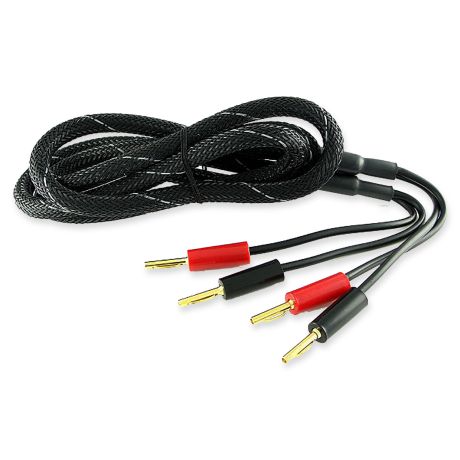Description
The Spatia speaker cable by Graham Slee will bring exceptional imaging to a capable stereo amplifier and pair of speakers.
They're also extremely low in capacitance (only 80 pf/m) to preserve your amplifier's phase margin.
The construction of the Spatia speaker cables closely approximates the best virtues in interference suppression letting the your amplifier work unimpeded in a number of ways.
Firstly its capacitance is so low that amplifier stability isn't adversely affected: at only 80 pf per metre any regular length of Spatia speaker cable will contribute little indeed toward instability - even when using amplifiers without output inductors.
In other words, the Spatia speaker cable is a safe speaker cable to use. So when the amplifier is called upon to deliver some serious power to the speaker load, the Spatia speaker cable won't be getting in the way.
The close proximity slow twist construction minimises its electrical and magnetic fields so its antenna action is minimal: it won't be attracting high frequency interference onto itself, because when interference gets into your amplifier output the interference can be regenerated, and that mixes with its harmonic distortion to introduce new alien sounds which colour your music. The Spatia speaker cables therefore offer a more natural and unforced sound.
Features
- Exceptional imaging, airy and spacious.
- Extremely low capacitance, preserves phase margin.
- Close proximity slow-twist construction.
- Minimal antenna action.
Specifications
- Available Terminations: 4.00 mm Banana Plugs, 8.00 mm Spade Connectors.
- Connector Plating: Gold.
- Capacitance: 80 pf / metre (25 pf / foot)
- Voltage Rating: 1,000 V max
- Test Voltage: 4,000 V
- Lay-up: Close-coupled slow twist.
- Conductors: Fine bare copper.
- Core Insulation: Special compound.
- Jacket: PVC compound.
- Braid: PVC.
- Suggested Direction: Marked blue under braid to source end.
- EC Directive: ECD 73/23/EEC
More Information
Delivery and Returns
| Shipping method | Delivery Time | Cost |
|---|
Please be advised that we may upgrade your delivery to a better service if we deem it appropriate to designated destinations at no additional cost. Please view our returns policy.
*Quoted delivery times are estimates and apply to normal working days for in stock items.
Information
- Banana - Banana
- Banana - Spade
- Spade - Banana
- Spade - Spade
- Unterminated
Cable Information
- Speaker Cables
Tags
Worldwide Shipping
- Free UK First Class shipping on orders £ 99+
- UK shipping from: £ 1.95
- EU shipping from: £ 5.99
- International shipping from: £ 5.99
- View shipping rates for your country
Payment Methods
- Paypal
- Visa
- Mastercard
- All other major credit/debit cards










